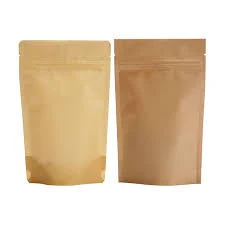- Afrikaans
- Albanian
- Amharic
- Arabic
- Armenian
- Azerbaijani
- Basque
- Belarusian
- Bengali
- Bosnian
- Bulgarian
- Catalan
- Cebuano
- chinese_simplified
- chinese_traditional
- Corsican
- Croatian
- Czech
- Danish
- Dutch
- English
- Esperanto
- Estonian
- Finnish
- French
- Frisian
- Galician
- Georgian
- German
- Greek
- Gujarati
- haitian_creole
- hausa
- hawaiian
- Hebrew
- Hindi
- Miao
- Hungarian
- Icelandic
- igbo
- Indonesian
- irish
- Italian
- Japanese
- Javanese
- Kannada
- kazakh
- Khmer
- Rwandese
- Korean
- Kurdish
- Kyrgyz
- Lao
- Latin
- Latvian
- Lithuanian
- Luxembourgish
- Macedonian
- Malgashi
- Malay
- Malayalam
- Maltese
- Maori
- Marathi
- Mongolian
- Myanmar
- Nepali
- Norwegian
- Norwegian
- Occitan
- Pashto
- Persian
- Polish
- Portuguese
- Punjabi
- Romanian
- Russian
- Samoan
- scottish-gaelic
- Serbian
- Sesotho
- Shona
- Sindhi
- Sinhala
- Slovak
- Slovenian
- Somali
- Spanish
- Sundanese
- Swahili
- Swedish
- Tagalog
- Tajik
- Tamil
- Tatar
- Telugu
- Thai
- Turkish
- Turkmen
- Ukrainian
- Urdu
- Uighur
- Uzbek
- Vietnamese
- Welsh
- Bantu
- Yiddish
- Yoruba
- Zulu
flex packaging
The Evolution and Importance of Flex Packaging
Flexible packaging, often referred to as flex packaging, has transformed the way industries approach product storage, transportation, and presentation. This innovative packaging solution has gained significant traction in various sectors, including food and beverage, pharmaceuticals, and consumer products. As a rapidly growing segment of the packaging industry, flex packaging combines convenience, sustainability, and enhanced product protection.
What is Flex Packaging?
Flex packaging refers to flexible materials that can be easily molded, folded, or bent, making them an ideal solution for packaging goods of diverse shapes and sizes. Common forms include bags, pouches, films, and wraps made from materials such as plastic, paper, and aluminum. Unlike rigid packaging options, which are often bulky and less versatile, flexible packaging provides a lightweight alternative that reduces transportation costs and energy consumption.
Benefits of Flex Packaging
One of the most significant advantages of flex packaging is its ability to extend product shelf life. The use of multi-layer films can create a barrier against moisture, oxygen, and light, all of which are detrimental to product quality. This is particularly crucial in the food industry, where maintaining freshness and preventing spoilage are essential. Additionally, the lightweight nature of flex packaging contributes to reduced shipping costs, making it a cost-effective option for manufacturers and retailers alike.
Flex packaging also excels in customization. Brands can utilize vibrant graphics and unique structural designs to enhance product visibility and appeal on the shelf. The flexibility of the material allows for various shapes and sizes, catering to consumers' evolving preferences and enhancing their unboxing experience. This adaptability ensures that products stand out in a competitive marketplace and attract consumer attention.
Sustainability and Eco-Friendliness
flex packaging

As environmental consciousness grows among consumers and businesses alike, sustainability has become a significant driving force in packaging choices. Flex packaging has made strides in this area, with many manufacturers adopting eco-friendly practices. The ability to create lightweight packages means less material is required for production, which not only conserves resources but also lowers carbon emissions during transportation.
Moreover, recyclable and biodegradable materials are increasingly being integrated into the flex packaging sector
. Innovations in materials science have led to the development of films made from renewable resources, such as plant-based plastics. Brands are now able to offer environmentally friendly packaging solutions that resonate with the eco-conscious consumer, thereby enhancing their market positioning and reputation.Challenges in the Flex Packaging Industry
Despite its advantages, the flex packaging industry faces challenges. One of the primary concerns is the recycling of flexible materials. Unlike traditional rigid plastics, flexible films often require specialized recycling processes, and many facilities are not equipped to handle them. As a result, a significant amount of flex packaging ends up in landfills. Addressing this issue requires collaboration between manufacturers, recyclers, and consumers to develop effective recycling programs and improve waste management practices.
Additionally, the industry must keep pace with regulatory changes regarding food safety and packaging materials. Ensuring that packaging complies with health standards while still being environmentally friendly can be a complex task. However, many companies are rising to the challenge, investing in research and development to ensure their products meet both safety and sustainability requirements.
The Future of Flex Packaging
The future of flex packaging looks promising, driven by technological advancements and changing consumer preferences. The integration of smart packaging technologies, like QR codes and NFC chips, is expected to enhance consumer engagement and provide information about product origins and sustainability practices. Moreover, as both brands and consumers prioritize sustainability, the industry will likely continue to develop innovative materials and recycling solutions.
In conclusion, flex packaging represents a dynamic and essential component of the packaging landscape. With its numerous benefits, including cost-effectiveness, customization, and sustainability, it has carved a niche for itself in various industries. As technology advances and environmental issues take center stage, flex packaging is poised to evolve even further, meeting the demands of a modern, conscious market.













